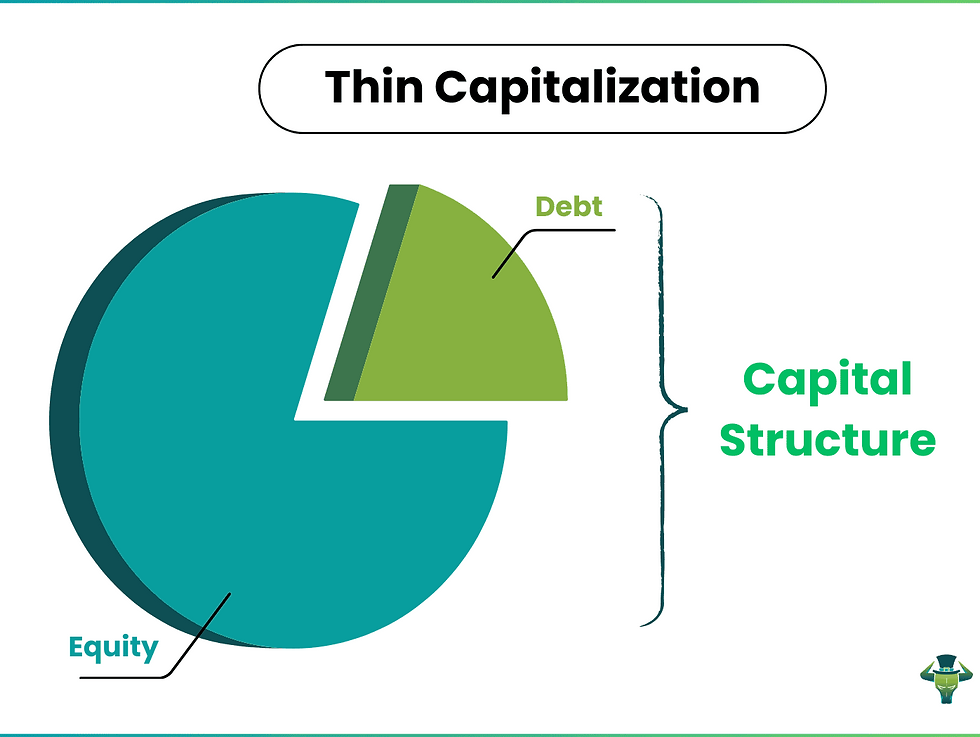Thin Capitalization: New Rules on Debt Restructuring and Tax Deductions
- Wis AU

- Sep 26
- 3 min read

Follow us on LinkedIn for the latest industry updates and trending news.
The Australian Taxation Office (ATO) has recently released Practical Compliance Guideline PCG 2025/2, which outlines its compliance approach to restructure under the thin capitalization rules (effective from 1 July 2023) and the debt deduction creation rules (DDCR) (effective from 1 July 2024). The guideline introduces a traffic-light style framework—White, Green, Yellow, and Red Zones—to help businesses identify risk levels and prepare appropriate responses.
This means that, going forward, businesses engaging in debt restructurings must not only consider financing efficiency but also proactively evaluate compliance risks and strengthen risk management practices.
ATO's Risk Framework—Four 'Traffic Light' Zones
PCG 2025/2 categorizes restructurings into four zones, similar to traffic signals, each reflecting a different level of ATO scrutiny.
White Zone
Characteristics: Lowest risk. Applies where a taxpayer has an ATO settlement (post 8 April 2024), a court decision, or where the ATO has conducted a review or audit of the restructure and provided a low-risk (or high-assurance) rating. It also applies where annual debt deductions do not exceed AUD 2 million.
ATO approach: Minimal verification only, no significant resource allocation.
Green Zone
Characteristics: Low risk. Restructuring arrangements align with the “low-risk examples” in the guideline, with reasonable terms, clear commercial purposes, and no obvious tax-driven manipulation.
ATO approach: May review self-assessments and supporting documentation, but unlikely to escalate into a full audit.
Yellow Zone
Characteristics: Compliance risk not assessed. Falls between Green and Red Zones, where the level of risk is less clear.
ATO approach: Likely to request further explanations to better understand potential compliance concerns.
Red Zone
Characteristics: High risk. Applies to arrangements that either (a) fall within the “high-risk examples” set out in the PCG schedules, or (b) have been reviewed by the ATO and rated as high risk. Importantly, being in the Red Zone does not automatically mean that anti-avoidance rules apply; it simply indicates that the arrangement is more likely to attract closer ATO scrutiny.
ATO approach: High-priority reviews, with the potential for reassessment or formal audit.
Practical Examples: Identifying Risk Levels
The guideline includes illustrative case studies to help taxpayers understand how restructuring arrangements may fall within different zones.
Schedule 1 & 2 – DDCR (Debt Deduction Creation Rules)
Low-risk actions: Using retained earnings to repay related-party debt; replacing short-term financing with external bank loans; refinancing related-party debt with genuine third-party loans; clearing intra-group cash pool liabilities.
High-risk actions: Artificially avoiding the application of DDCR; replacing related-party debt with external loans while simultaneously reducing offshore borrowing; shifting debt into Australia to increase deductions.
Schedule 3 – Third-Party Debt Test (TPDT) compliance approach (pending)
Guidance for this test has not yet been finalized, with the compliance approach still pending, and is expected to be released in August–September 2025. Businesses intending to rely on the TPDT should closely monitor forthcoming ATO updates and be prepared to adjust their positions once the guidance is issued.
Schedule 4 – Thin Capitalization Rules
Low-risk actions: Forming a tax consolidated group and only utilizing internal loss offsets without increasing debt; ensuring intra-group loan terms and interest rates are consistent with market conditions.
High-risk actions: Increasing related party borrowing solely to maximize the 30% EBITDA deduction; adopting the group’s highest external interest rate to inflate deductible interest artificially.
Businesses should benchmark their own restructuring arrangements against these examples to self-assess risk exposure and minimize the likelihood of falling into high-risk zones.
Practical Recommendations
To reduce the chance of being categorized in the Red Zone, businesses should focus on the following:
Self-assessment: Map proposed restructurings against the four risk zones outlined in PCG 2025/2.
Robust documentation: Maintain clear and traceable records of loan terms, funding purposes, and repayment arrangements.
Market alignment: Avoid transactions that appear primarily tax-driven; ensure terms reflect genuine commercial conditions.
Stay updated: Certain elements (such as the Third-Party Debt Test) remain under development. Businesses should stay alert to further ATO guidance.
In short: transparency, commerciality, and traceability are essential. Adhering to these principles can significantly lower compliance risk.
Conclusion
With the implementation of the thin capitalization rules and DDCR, PCG 2025/2 provides greater clarity on how restructuring arrangements will be assessed, along with practical case studies for self-assessment.
When undertaking debt restructurings, businesses should proactively evaluate risk levels, align financing terms with market standards, and maintain comprehensive, auditable records. Low-risk (Green Zone) arrangements are more likely to gain compliance acceptance, whereas high-risk (Red Zone) arrangements may trigger intensive reviews or audits.
Ultimately, in this new regulatory environment, the keys to minimizing tax risk will be transparency, commercial soundness, and strict compliance.
Source:


